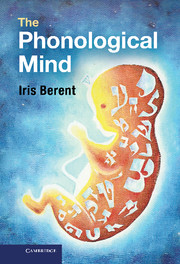Book contents
- Frontmatter
- Contents
- Figures
- Tables
- Copyright acknowledgements
- Preface
- Part I Introduction
- Part II Algebraic phonology
- 4 How phonological categories are represented
- 5 How phonological patterns are assembled
- Part III Universal design
- Part IV Ontogeny, phylogeny, phonological hardware, and technology
- References
- Index
4 - How phonological categories are represented
the role of equivalence classes
Published online by Cambridge University Press: 05 February 2013
- Frontmatter
- Contents
- Figures
- Tables
- Copyright acknowledgements
- Preface
- Part I Introduction
- Part II Algebraic phonology
- 4 How phonological categories are represented
- 5 How phonological patterns are assembled
- Part III Universal design
- Part IV Ontogeny, phylogeny, phonological hardware, and technology
- References
- Index
Summary
In earlier chapters, I suggested that the phonological grammar is an algebraic computational system. Phonological patterns, in this view, comprise abstract equivalence classes – categories whose members are all treated alike, regardless of whether they are familiar or novel. But on an alternative associationist account, phonological patterns bind chunks of phonological substance – the more likely two sound elements are to occur together, the more likely they are to form a chunk. Algebraic phonological categories are not represented by the human mind. To adjudicate between these two accounts, this chapter investigates the representation of two phonological primitives – syllables and the consonant/vowel distinction. If people represent these primitives as equivalence classes, then they should extend generalizations to any class member, irrespective of its statistical properties. The evidence emerging from a wide array of studies is consistent with this prediction.
What are phonological patterns made of?
Consider the phonological patterns in (1). In each line, the words share a pattern, and the patterns in the four lines are all different. The pattern in (1a) comprises a single unit; in (1d), it includes four units, and in (1b–c), the pattern has two units – either consonant- or vowel-initial. Our interest here concerns the nature of those units: What are the “beads” that form phonological necklaces, and what principles allow us to identify them?
- Type
- Chapter
- Information
- The Phonological Mind , pp. 63 - 83Publisher: Cambridge University PressPrint publication year: 2013



